A History of the County of Bedford: Volume 2. Originally published by Victoria County History, London, 1908.
This free content was digitised by double rekeying. All rights reserved.
'Parishes: Higham Gobion', in A History of the County of Bedford: Volume 2, ed. William Page (London, 1908), British History Online https://prod.british-history.ac.uk/vch/beds/vol2/pp344-347 [accessed 19 April 2025].
'Parishes: Higham Gobion', in A History of the County of Bedford: Volume 2. Edited by William Page (London, 1908), British History Online, accessed April 19, 2025, https://prod.british-history.ac.uk/vch/beds/vol2/pp344-347.
"Parishes: Higham Gobion". A History of the County of Bedford: Volume 2. Ed. William Page (London, 1908), British History Online. Web. 19 April 2025. https://prod.british-history.ac.uk/vch/beds/vol2/pp344-347.
In this section
HIGHAM GOBION
Echam (xi cent.); Hecham (xii cent.); Heyham, Heghham (xiii–xiv cents.).
The parish of Higham Gobion comprises 1,298 acres, of which 610 consist of arable land, 335 of permanent grass, and 1½ roods of plantations. (fn. 1) The soil is strong clay, with a subsoil of clay, and the crops produced are wheat, barley, and beans. The parish lies rather low, the highest point, 247 ft. above the ordnance datum, being near the village, while the lowest, 177 ft., is in the east, on the Shillington boundary.
The few houses that compose the hamlet round the church are placed on a flat ridge of land that runs northwards from the foot of the Barton Hills, and is surrounded by several miles of flat open country. The church stands close to the road, adjoining the rectory on the east side. In the low grounds near the church is an interesting earthwork called The Camp. (fn. 2) It probably was connected with the manor house. Roman remains have also been found in the parish.
The manor house, now a farm, is on the northwest side of the church, and contains a seventeenthcentury chimney-piece, on which are twelve small shields with heraldry, the Butler arms being in the centre, with a more elaborate setting than the others. The arms are roughly inlaid and coloured, but now somewhat faded from age and varnish.
The church is about two miles east of the Bedford and Luton main road, on the further side of which there is a detached portion of the parish, 1 mile in length, containing a few houses, among which is Faldo Farm. Barton in the Clay separates this portion from the main parish, which it also bounds on the south side.
Manors
The manor of HIGHAM, known since the end of the thirteenth century as HIGHAM GOBION, was held by William de Loecles of Hugh de Beauchamp (fn. 3) at the time of the Great Survey; the overlordship remained vested in the Beauchamp family, and followed the descent of the barony of Bedford.
The manor was of considerable value at the date of the Survey, for it was assessed at 8 hides, and was worth £8. It had been held in the time of Edward the Confessor by five sokemen, who could assign and sell their land to whom they wished. By 1158 the manor had passed to Richard Gobion, (fn. 4) whose family gave their name to the place, and held the manor until 1300. In 1231 Katherine, widow of Richard Gobion, successfully claimed her third of 3 carucates in Higham as the dower settled on her by him and his father Richard. (fn. 5) Her opponent Hugh Gobion, grandson of Richard, was holding shortly afterwards two knights' fees in Higham, Streatley, Faldo, and Sharpenhoe; (fn. 6) he died in 1275, (fn. 7) and was succeeded by his son Richard, who in 1279 was accused by his mother Maud of failing to carry out an agreement made between them in 1277, whereby Maud had handed over one-third of the manor, which she held as dower, in return for £10 of silver paid annually during her life. (fn. 8) The dispute was amicably settled in the same year, and Maud was granted right of distraining if Richard should fail to pay the rent. (fn. 9) In 1284–6 the holding amounted to one and one-fifth part of a knight's fee. (fn. 10) Richard died in 1300, (fn. 11) leaving two daughters, the elder of whom, Hawise, married Ralph Butler, (fn. 12) to whom she brought the manor as her inheritance, after the death of her mother Margaret, in 1311. (fn. 13) The next year, 1312, Ralph and Hawise made a settlement of the manor, (fn. 14) and on Ralph's death, in 1342, Hawise still surviving, the reversion of the manor was inherited by their grandson Ralph, his father Sir John having died in 1339. (fn. 15) In 1346 Hawise held 1 fee in Higham, (fn. 16) and their estate by that date had been augmented by the acquisition of lands held in 1303 and 1316 by Thomas Paynel and Elizabeth his wife, (fn. 17) the other sister and co-heiress. Hawise died in 1360, and as her grandson Ralph had predeceased her in 1348, the manor was inherited by his brother Sir Edward. (fn. 18) He died without issue in 1412, (fn. 19) when the manor was inherited by his kinsman Sir Philip Butler, of Woodhall in Watton, Hertfordshire, grandson of Sir Edward's uncle Ralph. Sir Philip died a few years later, in 1420, and his widow, Elizabeth, married as her second husband Laurence Cheyne, who was holding the manor in right of his wife in 1428. (fn. 20) Sir Philip's son and heir, Edward, died a minor in the same year as his father, and was succeeded by his brother Philip, aged fifteen, in 1429. (fn. 21) This Philip, who was holding the courts of the manor in 1450–51, (fn. 22) died in 1453, and was succeeded by his son John, (fn. 23) whose son Sir Philip died seised of the manor in 1545. (fn. 24) The latter's son and heir, Sir John, settled the manor on his son Sir Philip, giving annuities to his other sons, Thomas, Nicholas, and William. Sir Philip died in 1606, and was succeeded by his grandson Sir Robert, (fn. 25) who in 1621 settled the manor on his infant daughter Jane, aged three years at her father's death in 1622. (fn. 26) By 1637 Jane was married to John Bellasis, and in that year her guardian Godfrey Maidwell received licence to alienate the manor on her behalf in order to pay her father's and mother's debts. (fn. 27) The manor was therefore sold, in 1638, to William Langley, (fn. 28) who in 1641 was created a baronet. He was accused before the Parliamentary Committee in 1649 of having supplied horses for his son under the earl of Newcastle, but he denied being a party to his son's action, pleaded heavy losses in the service of Parliament, and having proved that he was acquitted of this charge of delinquency in 1645 by the county committee, a discharge was granted him in 1652. (fn. 29) He died in 1653, and was succeeded in the title and estates by his son Roger, (fn. 30) who in 1657 sold the manor to Amabel countess of Kent, (fn. 31) from whom it has descended to the present owner, Lord Lucas and Dingwall, the history of the manor after its acquisition by the Greys being similar to that of the manor of Wrest (q.v.).
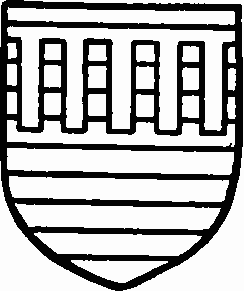
Gobion. Barry of ten pieces argent and gules with a label azure having five pendants.
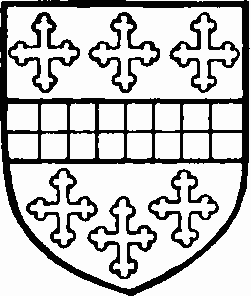
Butler. Gules a fesse checky argent and sable between six crosslets or.
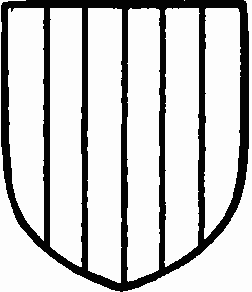
Langley. Paly argent and vert.
There was a vineyard attached to the manor, which is mentioned for the first time in 1259, (fn. 32) and which in 1300 was worth 12d. (fn. 33) There was also a mill in Higham, which was involved in the dispute between Richard Gobion and his mother Maud in 1279. Maud held a third of the mill in dower, and the men of her manor of Streatley were accustomed to do suit and to grind their corn there. (fn. 34) At Richard's death in 1300, the mill, called a water-mill, was worth 13s. 4d. (fn. 35)
The abbey of Woburn possessed a small estate in Higham, which, together with land in Potsgrove, was worth £3 13s. 7½d. in 1291; (fn. 36) in 1337 the value of the holding was the same. (fn. 37) There is no further record of this property.
There were apparently two other manors in this parish, which by 1613 had amalgamated, and were always afterwards known as the manor of WESTHEY AND FALDO. Of these the manor of Faldo owed its name to the family of Faldo or Keynes of Faldo. William de Faldo and Cecilia his wife owned land in Higham Gobion in 1245, (fn. 38) and the heirs of the former in 1302 held 1 hide of Ralph Butler for the fifth part of a knight's fee. (fn. 39) This estate, which is mentioned for the first time as a manor in 1336, was still held at that date of Ralph Butler, (fn. 40) but the overlordship is not again mentioned.
In 1312 William son of William de Keynes of Faldo and Joan, probably a grandson of the original holder, defended his mother in an action which she brought against Robert Michel, concerning her dower of 10 marks of annual rent paid from her tenants in Higham, Faldo, and elsewhere. (fn. 41) This William joined the earl of Lancaster's rebellion in 1322, and his estates were forfeited; but he was afterwards pardoned, and his possessions were restored to his heir in 1324, William's death having occurred in the interval. (fn. 42) This heir, another William Keynes, died in 1336, leaving as his co-heiresses his four aunts, Christina, Emma, Alice, and Margery. (fn. 43) Alice, who at that date was married to Roger Foliot, appears to have married as her second husband Ralph Fitz Richard, with whom, in 1389, she made a settlement of two parts of the manor, (fn. 44) which here appears for the first time in conjunction with the manor of Westhey, of which no earlier record has been found. (fn. 45) There is no further mention of the manor of Faldo until 1613, when it reappears with Westhey as one manor. (fn. 46) The latter manor, which in 1389 was in the possession of Ralph and Alice Fitz Richard, had come into the hands of Ralph and Elizabeth Hamelyn by 1408, (fn. 47) and in 1485 it was the property of Thomas Bassingbourn, (fn. 48) who in 1500, with his wife Katherine, alienated the manor to Sir Reginald Bray. (fn. 49) The manor for a short time was held by the Brays, with the manor of Haynes (q.v.). (fn. 50) Sir Edmund Bray, the nephew of Sir Reginald, probably alienated the manor to the descendants of his mother and her first husband Isaac ap Rys, or Aprice, (fn. 51) as by 1559 it was in the possession of William Aprice, (fn. 52) a grandson of Isaac and Jane Aprice. William in that year made a settlement of the manor on his sons in tail male, and it passed to his eldest son Robert, who was lord in 1604. (fn. 53) In 1613 Robert united with his brothers Edmund and John to alienate the manor to Francis Crawley, the amalgamation of the manors having apparently taken place before this date. (fn. 54) Francis Crawley or his descendants (fn. 55) evidently conveyed the manor to the Crowch family, for Samuel Crowch was holding it in 1656. (fn. 56) The latter, with his wife Mary and several relatives, sold the manor in the same year to Anthony Samwell, (fn. 57) who did not retain it for long, for in 1662 he, with his wife Anne, his son William and his brother Arthur, alienated the manor to Thomas Halfpenny. (fn. 58) It remained in the Halfpenny family for about sixty years. Thomas, dying in 1684, (fn. 59) was succeeded by his son Thomas, sheriff for Bedfordshire in 1685, (fn. 60) who, with his wife Mary, owned the manorial rights in 1702. (fn. 61) Bernard, probably a son of Thomas, alienated the manor in 1725 to Sir George Byng, Lord Torrington, (fn. 62) whose grandson George was holding it in 1762. (fn. 63) After that date there is no trace of the manorial rights, which probably lapsed, but the manorhouse still exists, and is known as Faldo Farm.
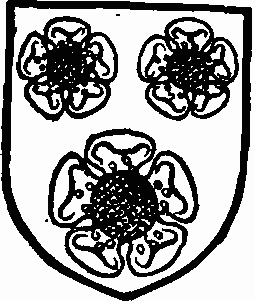
Aprice. Sable three roses argent.
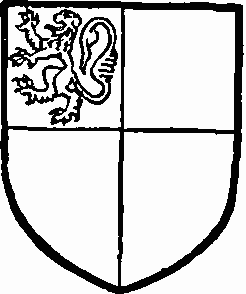
Byng. Quarterly sable and argent with a lion argent in the quarter.
Church
The church of ST. MARY or ST. MARGARET has a chancel 28 ft. by 14 ft. 4 in., nave 43 ft. by 18 ft. 8in., with a north aisle which is merely a passage 2 ft. wide, and west tower 11 ft. square within the walls. The whole has been much modernized. The tower and north aisle having fallen into a ruinous state, the tower arch and north arcade were blocked up with masonry until 1880, when they were reopened and the tower rebuilt without a spire, which it formerly possessed, while in the case of the north aisle, the present narrow passage took the place of an aisle. The east wall of the chancel was also rebuilt, the present modern three-light window being inserted. In the north wall of the chancel is a window of two trefoiled lights, with tracery in the head of fourteenth-century date, and near it a stone corbel which shows remains of a mask. At the south-east of the chancel are three cinquefoiled sedilia, with a piscina to the east of them; they are of fifteenthcentury style, but have been much scraped down. There is a south door to the chancel of late fifteenthcentury date, and to the west of it is a modern twolight window with old jambs.
The chancel arch and the north arcade of the nave, which is of three bays, are contemporary with each other and of early fourteenth-century date, the chancel arch having rather richer detail than the arcade. The arcade has pointed arches of two chamfered orders, with a moulded label and piers of four engaged shafts with moulded capitals and bases, and is a notably delicate and well-designed specimen of its date. There are no old windows in the nave, but in the south wall, west of the doorway, the relieving arch of a small pointed light is to be seen on the outside of the wall, and may point to the former existence of a thirteenth-century window here. The east arch of the tower is of late fifteenth-century date, while the rest of the tower dates from 1880, and all the woodwork of the church is equally modern. Some old masonry details and carving have been used up in the aisle, and in the altar table some sixteenth-century woodwork has been inserted. The font has an octagonal bowl and stem of rather clumsy outline, and appears to be of seventeenth or eighteenth-century workmanship.
In the south wall of the chancel are set the brasses of Jane Cason, 1603, and her son Julian, and below them those of Catherine Browne, 1602, with six daughters and nine sons. Above the two principal figures are shields with Cason impaling Butler and Browne impaling Butler. There is one bell of 1829, by Thomas Mears.
The plate comprises a communion cup and paten of 1681, and there is also a pewter paten.
The registers are incomplete, the first book going from 1585 to 1727, and the second beginning in 1785.
Advowson
The church of Higham Gobion was in the gift of Markyate Priory from the date of the foundation of that monastery in 1154, (fn. 64) until the Dissolution and it also acquired the rectorial tithes in the thirteenth century. (fn. 65) About 1291, the total value of the church was £8, out of which £3 6s. 8d. was paid to the priory as a pension, (fn. 66) this pension was of the same amount in 1402, (fn. 67) but in 1535 it had diminished to £1. The value of the rectory, exclusive of the pension, was then £8 9s. 6d. (fn. 68) The church, which passed to the crown at the Dissolution, was granted in 1543 to Richard Andrews to hold of the king in chief by knight's service; (fn. 69) Richard Andrews probably conveyed his right to Robert Burgoyne, for the latter in 1565 alienated the advowson of the rectory to Henry Butler and his heirs. (fn. 70) Sir John Butler, Henry's son, was required to justify his title to the advowson in 1573. (fn. 71) The vicarage was worth £11 10s. 6d. (fn. 72) The right of presentation was retained by the Butler family, passing from John, created Lord Brantfield, who died in 1637, to his son Lord William Butler, an idiot, who died without issue in 1647, (fn. 73) when the advowson became the right of his six sisters: Audrey who married Francis, earl of Chichester; Helen, wife of Sir John Drake; Jane, wife of James, earl of Marlborough; Olive who married Endymion Porter; Mary, wife of Edward, Lord Howard of Escrick; and Anne, wife of Mountjoy Blount, earl of Newport, or of their descendants. (fn. 74) A series of settlements then followed, by which George Villiers, Viscount Grandison, and Mary his wife acquired the advowson, one sixth being purchased in 1652, another in 1664, and the remaining two-thirds at the end of the latter year. (fn. 75) The advowson remained vested in this family for many years, (fn. 76) John, Viscount Grandison, and Frances his wife being patrons in 1714. In that year they conveyed their right to Richard and John Harrison, and to the heirs of the former. (fn. 77) After the death of Richard Harrison a presentation was made in 1727, by Mary, the wife of Geoffrey Hawkins, rector there in 1722. (fn. 78) She was probably the daughter of Richard Harrison, but no proof of this has been found. (fn. 79) For many years the patronage remained vested in the Hawkins family, but it was transferred by the Reverend John Hawkins in 1787 to Robert Cooper Lee as trustee; (fn. 80) the Lees were presenting in 1800 and 1807, (fn. 81) but the advowson passed to Mr. Marvin, rector there from 1855 to 1888, and is now vested in his trustees.
Dr. Castell, the author of the Lexicon Heptaglotton, which was published in 1669, retired to Higham Gobion, towards the end of his life, in 1674, and died as rector there in 1685 in great poverty and distress, having been broken in health by his great labours. (fn. 82)
There are no endowed charities in this parish.